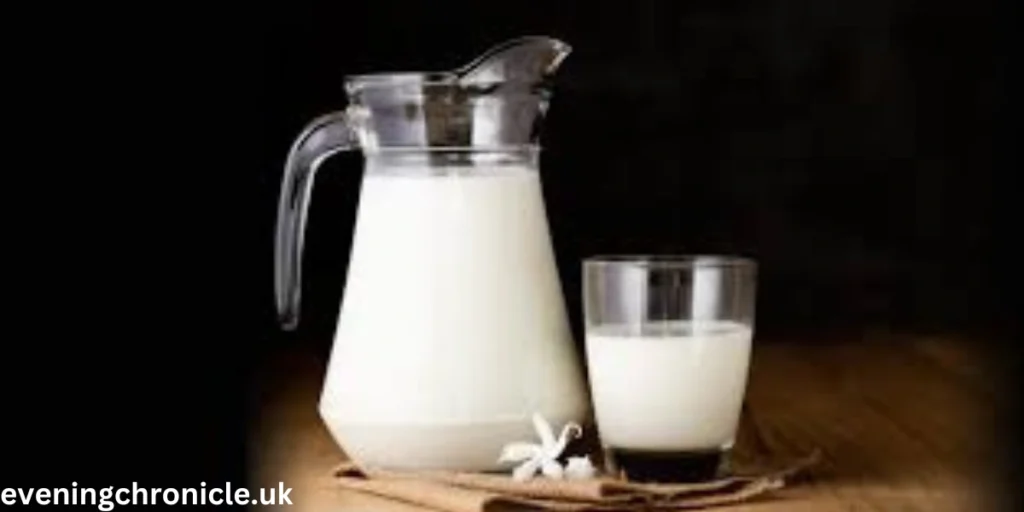Milk is a staple in many households and is often considered a complete food due to its rich nutritional profile. Understanding the caloric content of milk can help you make informed dietary choices, especially if you are monitoring your calorie intake for weight management or health reasons.
Nutritional Profile of Milk
Milk is packed with essential nutrients that contribute to overall health. These include:
Macronutrients
- Protein: Vital for muscle repair and growth.
- Fat: Provides energy and supports cell function.
- Carbohydrates: Primary source of energy.
Micronutrients
- Vitamins: Such as Vitamin D, B12, and riboflavin.
- Minerals: Including calcium, phosphorus, and potassium.
Caloric Content in Milk
The calorie content in milk can vary based on the type and processing methods. Calories are calculated from the macronutrient content, where each gram of protein and carbohydrate provides 4 calories, and each gram of fat provides 9 calories.
Calories in 100 ml Whole Milk
Whole milk contains around 61 calories per 100 ml. This is due to its higher fat content, which also contributes to its creamy texture and richer taste.
- Protein: 3.2 grams
- Fat: 3.5 grams
- Carbohydrates: 4.8 grams
Nutritional Benefits and Drawbacks
Whole milk is a good source of essential nutrients but is also higher in saturated fats, which might be a concern for those monitoring their fat intake.
Calories in 100 ml Skim Milk
Skim milk contains approximately 34 calories per 100 ml, making it a lower-calorie alternative to whole milk.
- Protein: 3.4 grams
- Fat: 0.1 grams
- Carbohydrates: 5 grams
Nutritional Benefits and Drawbacks
Skim milk retains most of the nutrients found in whole milk but has significantly less fat, making it a popular choice for those looking to reduce their calorie and fat intake.
Calories in 100 ml Semi-Skimmed Milk
Semi-skimmed milk has about 47 calories per 100 ml, offering a middle ground between whole and skim milk.
- Protein: 3.4 grams
- Fat: 1.7 grams
- Carbohydrates: 4.8 grams
Nutritional Benefits and Drawbacks
This type of milk provides a balanced mix of nutrients with moderate fat content, making it a versatile option for many diets.
Also, read: (The Ultimate Guide to 100 ml Milk Protein 2024)
Calories in Plant-Based Milk Alternatives
Almond Milk
Almond milk typically has around 13 calories per 100 ml, depending on whether it is sweetened or unsweetened.
- Protein: 0.4 grams
- Fat: 1.1 grams
- Carbohydrates: 0.3 grams (unsweetened)
Soy Milk
Soy milk contains approximately 33 calories per 100 ml.
- Protein: 3.3 grams
- Fat: 1.6 grams
- Carbohydrates: 2.5 grams
Oat Milk
Oat milk has about 45 calories per 100 ml.
- Protein: 1 gram
- Fat: 1.5 grams
- Carbohydrates: 7 grams
Rice Milk
Rice milk contains around 47 calories per 100 ml.
- Protein: 0.1 grams
- Fat: 1 gram
- Carbohydrates: 10 grams

Factors Affecting Caloric Content
Fat Content
The amount of fat significantly impacts the calorie content in milk. Whole milk has higher calories due to more fat, while skim milk has fewer calories due to minimal fat content.
Added Sugars and Flavors
Flavored milk often contains added sugars, increasing the calorie content compared to plain milk.
Processing Methods
Ultra-filtered milk can have varying calorie counts due to changes in protein and carbohydrate concentrations during processing.
Health Implications of Milk Consumption
Benefits of Milk for Different Age Groups
Milk supports bone health in children, aids muscle maintenance in adults, and can help prevent osteoporosis in the elderly due to its calcium and vitamin D content.
Potential Health Risks
Excessive consumption of full-fat milk might contribute to heart disease due to high saturated fat content. Lactose intolerance can cause digestive issues in some individuals.
Incorporating Milk into a Balanced Diet
Daily Recommended Intake
The recommended daily intake of milk varies by age, but generally, adults should aim for 2-3 cups per day.
Creative Ways to Include Milk in Your Diet
- Smoothies: Blend with fruits and vegetables.
- Coffee and Tea: Use as a creamer.
- Baking: Substitute for water in recipes for added richness.
Comparing Milk with Other Beverages
Milk vs. Juice
Milk provides protein and fat, while juice is primarily a carbohydrate source with vitamins. Milk can be more satiating due to its protein content.
Milk vs. Soft Drinks
Milk offers essential nutrients, whereas soft drinks are high in sugar with little to no nutritional value.
Milk vs. Water
While water is essential for hydration, milk provides additional nutrients that water lacks.
Frequently Asked Questions
Is Milk Good for Weight Loss?
Milk, especially skim milk, can be part of a weight-loss diet due to its protein content and lower calories compared to sugary drinks.
Can Lactose-Intolerant Individuals Consume Milk?
Lactose-free milk and plant-based alternatives like almond or soy milk are suitable options for those with lactose intolerance.
How Does Milk Compare to Other Dairy Products?
Milk generally has fewer calories than cheese and yogurt, depending on fat content and added ingredients.
What Are the Best Milk Alternatives for Vegans?
Almond, soy, oat, and rice milk are popular vegan alternatives, each with unique nutritional profiles.
How to Choose the Right Type of Milk for Your Diet?
Consider your nutritional needs, calorie intake goals, and any dietary restrictions when selecting milk.
Conclusion
Understanding the caloric content in 100 ml of milk can help you make better dietary choices. Whether you prefer whole milk, skim milk, or plant-based alternatives, knowing the nutritional benefits and potential drawbacks can guide you towards a balanced diet.


